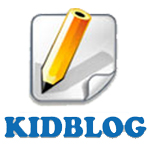The
gifted identification is often not seen as an exceptionality.
However, these students definitely require special differentiation
and support to help promote learning. Therefore, I have selected a
few technological tools that I found can be effectively used when
working with students who have been identified as gifted.
1.
iPads and Apps
There
are a variety of apps that can be downloaded to help students who are
gifted. These apps can allow students to work at a level that is
appropriate and challenging to themselves as individuals while the
rest of the class follows a more basic lesson. Here are some
examples of apps that could be used:
- Animoto
- DragonBox
- Fractals
- GeoBee Challenge
- Khan Academy
- Numbers League
- Rover
It
is also important to remember that these apps can also be used by
students who have not been identified as gifted! However, the apps
listed above can add an extra layer of difficulty to students who
need a challenge.
2.
Blogging
This
program allows for the explanation of basic to complex concepts
and thinking skills as
students have to concurrently create and explain
their work. Students can become an 'expert' on a topic of
their choice, and then
'teach' the class by creating an Educreations recording with audio
and video. This allows students to work at a level that is
appropriate to them and they can
then get the opportunity
to watch
the recordings of their peers and provide feedback. I have found
this to be beneficial for students identified as gifted because they
are able to communicate their understandings on a profound level that
involves complex thinking. Therefore, they are engaged in their
learning since they feel challenged yet confident.









